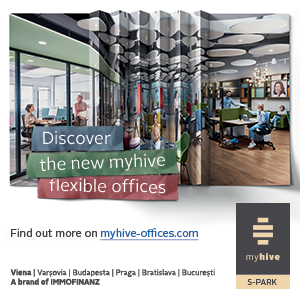:quality(80)/business-review.eu/wp-content/uploads/2022/01/dreamstime_s_77636602.jpg)
Front-end development heavily relies on user experience (UX) design to shape how users interact with websites and applications. A well-crafted UX can boost engagement, improve customer satisfaction, and drive conversions. This article delves into the fundamental principles of UX design in front-end development, necessary front-end development services, and provides insights into creating intuitive and engaging interfaces.
User Experience (UX) in Front-End Development Explained
The term “User Experience” (UX) refers to a person’s overall experience while using a website, application, or digital product. It includes various aspects, such as usability, accessibility, and visual aesthetics. In front-end development, UX design focuses explicitly on creating user-friendly interfaces that are visually appealing, ensuring a positive experience for the user. Front-end developers aim to design interfaces that are easy to use and navigate while considering accessibility for users of all abilities. The visual appearance of the interface is also important, as an attractive and well-designed interface can improve user engagement and satisfaction. By prioritizing UX design principles, front-end developers aim to create interfaces that leave a lasting impression and contribute to the success of digital products.
You can always hire a team of front-end developers or a designer for your upcoming projects. We highly recommend paying attention to Sloboda Studio as they are specialists in creating web applications, online stores, software, etc. for more than 13 years.
Understanding User-Centric Design
The core principle of UX design is user-centric design, which means creating products that meet the needs and preferences of users. To achieve this, UX designers must consider the target audience and their goals. By collecting user feedback, conducting usability tests, and making iterative improvements, designers can create interfaces that meet users’ specific requirements.
Key Principles of User-Centered Design
User-centered design follows a set of principles that guide the design process. These principles include:
- User Research: Conducting user research to gain insights into user behavior, preferences, and goals.
- User Persona: Creating user personas to represent different user types and their characteristics.
- User Journey Mapping: Mapping out the user’s journey to identify pain points and opportunities for improvement.
- Information Architecture: Organizing content in a logical and intuitive manner, making it easy for users to find what they need.
- Wireframing and Prototyping: Creating wireframes and prototypes to visualize the interface and test its usability before development.
- Usability Testing: Conducting usability tests with real users to identify issues and gather feedback for improvement.
By following these principles, front-end developers can ensure that the interface is designed with the user’s needs and expectations in mind.
Analysis for User-Centric Approaches
To create a design that is tailored to the needs of users, it is essential to analyze their behavior and collect data to guide design decisions. Various user analytics tools like heatmaps and user session recordings can offer insights into how users interact with the product, which features are popular, and areas that can be improved. This information helps front-end developers recognize patterns and make informed choices to enhance the user experience.
Additionally, user feedback and surveys are valuable resources for improving the design. By regularly seeking input from users and addressing their concerns, designers can identify any usability issues and refine the design to meet the users’ needs better.
How to Create Intuitive and Engaging Interfaces
Creating intuitive and engaging interfaces is key to providing a positive user experience. Let’s explore two important aspects of UX design that contribute to this:
Effective Information Architecture and Navigation
The term “information architecture” relates to how the content of a website or application is organized and structured. A good information architecture ensures that users can easily locate what they are searching for. This can be accomplished through clear navigation menus, well-defined categories, and easy-to-use search functions. By considering how the user thinks and what they expect, developers can design user-friendly and straightforward interfaces.
Visual Hierarchy and Consistency in Design
A clear visual hierarchy is important in directing users’ attention and prioritizing content. Front-end developers can achieve this using visual cues like size, color, and contrast. Design consistency enhances usability and creates a cohesive user experience across all interface pages and sections.
Usability and Accessibility Considerations
Usability and accessibility are essential aspects of UX design that ensure all users can access and interact with digital products effectively. Let’s delve into these considerations:
Designing for Ease of Use
User experience design focuses on making interfaces easy to use and intuitive, with usability being a key aspect. Front-end developers achieve this by simplifying and clarifying interfaces to reduce cognitive load. Clear instructions guide users through interactions, while helpful feedback informs them of their progress and actions. To ensure usability, developers conduct usability tests and gather user feedback on areas of confusion and pain points. This feedback is valuable in identifying opportunities for improvement and fine-tuning the interface for a smoother and more pleasant user experience. Prioritizing usability results in user-friendly interfaces, increasing user satisfaction and engagement.
Ensuring Accessibility for All Users
Front-end developers must prioritize accessibility when designing user experiences. This means creating interfaces that people with disabilities can easily use. Essential features include:
- Providing alternative text for images.
- Enabling keyboard navigation for those who cannot use a mouse.
- Ensuring adequate color contrast for visually impaired users.
By following accessibility guidelines and standards, developers can create inclusive interfaces that everyone can access, regardless of their abilities. This commitment to accessibility promotes equal access to information and services, resulting in a more inclusive digital environment.
Importance of Performance and Speed Optimization
In today’s fast-paced digital world, people demand quick loading times and great performance from websites and apps. To achieve this, front-end developers use tactics like reducing file sizes, minimizing server requests, and implementing caching techniques. These methods significantly improve performance, resulting in a fast and responsive interface. This enhances the user experience, boosts search engine rankings, and raises conversion rates. By focusing on performance optimization, front-end developers can create a smooth and enjoyable user experience, leading to greater engagement and success for digital products.
Mobile-First and Responsive Design
With the rising dominance of mobile devices in today’s digital landscape, front-end developers must prioritize mobile experiences. Adopting a mobile-first design approach involves starting the design process by focusing on mobile devices and progressively enhancing the interface for larger screens. This strategy ensures that the interface is optimized for smaller screens and offers a seamless user experience across different devices. The responsive design further enhances mobile experiences by allowing the interface to adapt fluidly to various screen sizes and resolutions. By implementing these approaches, front-end developers can cater to the growing population of mobile users and ensure their interfaces provide optimal usability and engagement, regardless of the device used.
Emotionally Engaging User Experiences
In the world of user experience, emotions hold great importance in shaping how a website or application is perceived. To achieve this, front-end developers can understand the emotional impact of their design choices. Developers can evoke positive emotions and create a sense of delight by using visually appealing elements such as captivating imagery and thoughtful typography. Micro-interactions such as subtle animations and intuitive feedback can add an extra layer of interactivity, enhancing user engagement and enjoyment. Additionally, incorporating storytelling elements that align with the target audience’s values and aspirations can establish a deeper connection and leave a lasting impression. By considering the emotional impact of design choices, front-end developers can create interfaces that serve functional needs and elicit positive emotional responses, leading to a more meaningful and engaging user experience.
Testing and Iteration for Continuous Improvement
Front-end developers can improve their work by testing and iterating regularly. This process helps them identify areas for improvement and address any usability issues. Additionally, user feedback is valuable for gaining insights into user preferences, pain points, and opportunities for enhancement. A/B testing, which involves comparing different interface versions, can also help evaluate the effectiveness of design choices and make informed decisions based on user behavior.
Studying user behavior through analytics tools can give developers important insights into how users interact with the interface. By analyzing engagement metrics, click-through rates, and conversion rates, they can identify popular features and areas for improvement. This helps developers optimize the interface to meet user preferences better.
By continuously testing and iterating, Front-end developers can ensure that a website or application evolves with changing user needs and technological advancements. This approach promotes continuous improvement in UX design and helps deliver a user experience that consistently meets and exceeds user expectations.
Conclusion
It’s important to follow user experience (UX) design principles to create engaging and intuitive interfaces in front-end development. This means adopting user-centric approaches, prioritizing usability and accessibility, optimizing performance, and considering emotional engagement. It’s also important to continuously test and iterate the interface based on user feedback and data insights. By prioritizing UX design principles, front-end developers can build interfaces that make a lasting impression on users and contribute to the success of digital products.




:quality(80)/business-review.eu/wp-content/uploads/2015/07/facebook.jpg)




:quality(80)/business-review.eu/wp-content/uploads/2021/08/Piata-Unirii-la-Gala-de-inchidere-TIFF-2021-Foto-Marius-Maris.jpg)

:quality(80)/business-review.eu/wp-content/uploads/2023/06/COVER-1.jpg)




:quality(80)/business-review.eu/wp-content/uploads/2023/06/print-may-2.jpg)

:quality(50)/business-review.eu/wp-content/uploads/2023/06/buy-instagram-likes.png)
:quality(50)/business-review.eu/wp-content/uploads/2022/01/Gabriel-Blanita-1099.jpg)
:quality(50)/business-review.eu/wp-content/uploads/2023/06/ADASTEC-buses-117749.jpg)